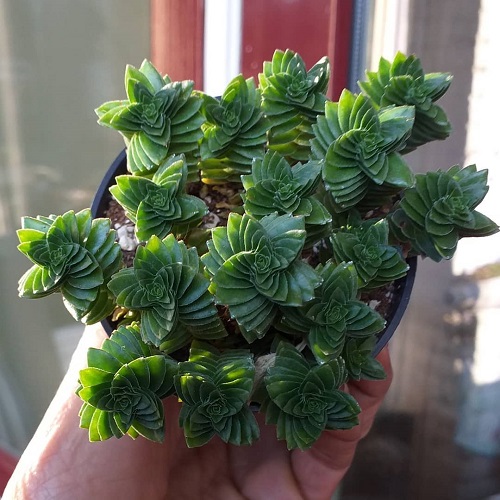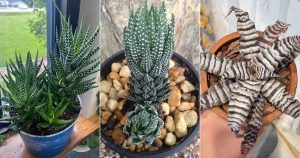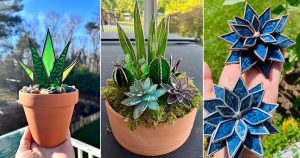Want something beyond the usual rosettes? Here are some of the most beautiful succulents with spiral-shaped leaves that you will love!
We all want our succulent collections to stand out, but choosing the right ones can be tricky. So, we’ve rounded up the most eye-catching succulents with spiral leaves. These beauties have mesmerizing patterns that turn heads and are the cherry on top of your collection. Let’s begin!
Succulent with spiral-shaped leaves
1. Spiral Aloe
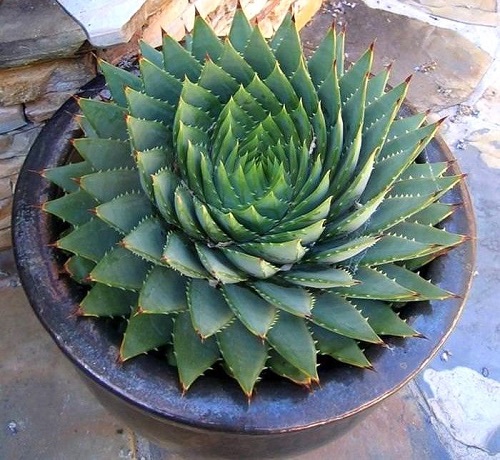
Botanical name: Aloe polyphylla
As the name hints, this aloe grows in a perfect spiral that looks like a blooming flower. It loves bright (but not harsh) sunlight, well-draining soil, and occasional watering.
Spiral Aloe blooms with pink to salmon flowers that attract birds and pollinators. It also spreads easily through offsets or cuttings.
Fun fact: Its “golden spiral” pattern mimics nature’s famous math trick—just like sunflowers and pinecones!
2. Crassula Spiralis
Botanical name: Crassula perfoliata var. falcata
Coming to yet another unique succulent, its spiral shape becomes clearer as the stacked leaves grow in groups of four. It’s low-maintenance, has a smooth waxy texture to prevent water loss, and can survive droughts.
In summer, it surprises you with bright red, starry flowers that attract bees and butterflies.
And in Feng Shui, Crassula plants are symbols of luck and prosperity.
3. Spiral Haworthia
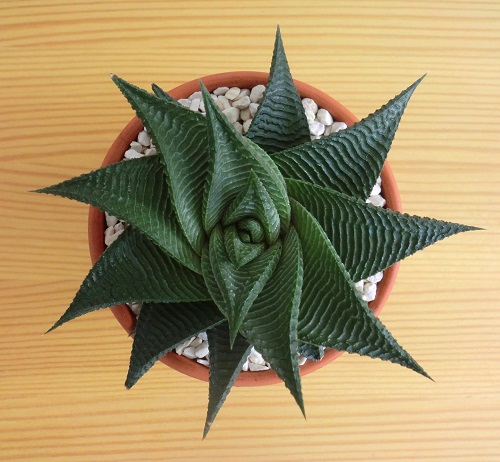
Botanical name: Haworthia limifolia var. spiralis
Spiral Haworthia is named after its distinctive spiral leaf pattern—that is, its leaves have small lines or ridges that grow into a spiral. It’s one of the few succulents with a true natural spiral form and can be found in parts of Southern Africa.
Moreover, being very low-maintenance, it has a slow growth habit too. So, if you’re looking for a compact spiral plant, this is it!
4. Frizzle Sizzle
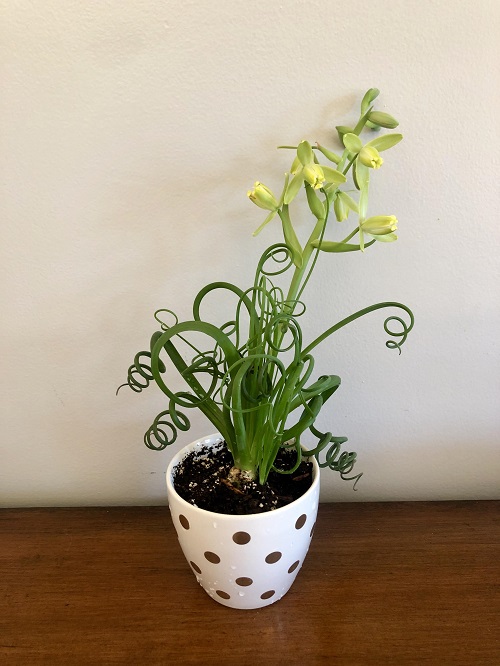
Botanical name: Albuca spiralis
First of all, this succulent obviously has a super interesting name. Found in South Africa, this one is a favorite among succulent lovers because of its tightly coiled, corkscrew-shaped leaves covered in tiny sticky hairs. This succulent goes dormant in summer, letting its leaves dry out and rest until cooler weather returns.
It oozes a gooey sap when cut, which helps keep pests away. Grow it in bright, indirect light and water only when the soil is bone dry.
And propagate it from bulbs—it’s much easier than starting from seeds.
5. Spiral Cereus
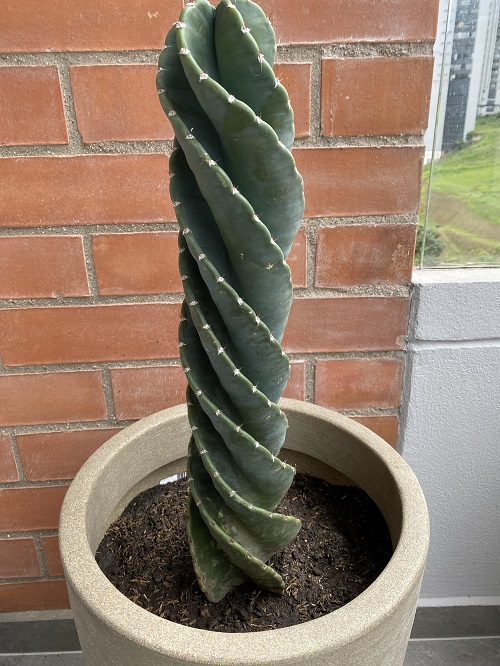
Botanical name: Cereus forbesii cv. Spiralis
Did you know that the unique spiral pattern of Spiral Cereus is not just a design feature of the plant but also contributes to the cactus’s ability to survive in harsh environments? Yes, its stem has water-storing capabilities that help it in situations of drought.
During the warmer season, it produces large night-blooming flowers that burst with colors to attract pollinators like moths and bats. Also, in many cultures, the spiraled cactus is known as a symbol of endurance and resilience.
6. Senita Cactus
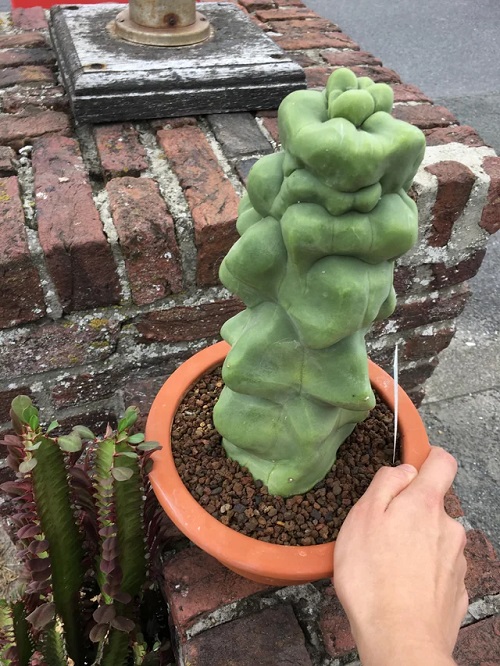
Botanical name: Lophocereus schottii var schottii forma spiralis
Straight from the Sonoran Desert, this tall, slim cactus can grow up to 6m with long spines. In frosty areas like Southern California, it stays smaller.
Its flowers bloom for just a few hours at night and attract pollinators like moths and bats.
Note: It thrives in areas with extreme temperature swings—this cactus is a true desert warrior.
7. Varispiralis Cactus
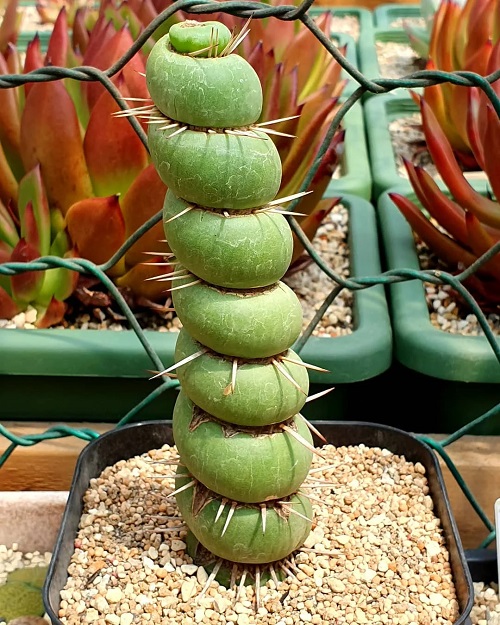
Botanical name: Eulychnia castanea cv. varispiralis spiral form
The Varispiralis is a rare cactus species that can be found in Chile. This spiral beauty needs full sun, sandy soil with charcoal, and watering every 10–15 days in summer. That’s quite an admirable drought tolerance, if you ask us!
An interesting fact about this plant is that it can resist cold well and can withstand minimum temperatures down to even 28.4°F or -2°C.
8. Bilberry Cactus
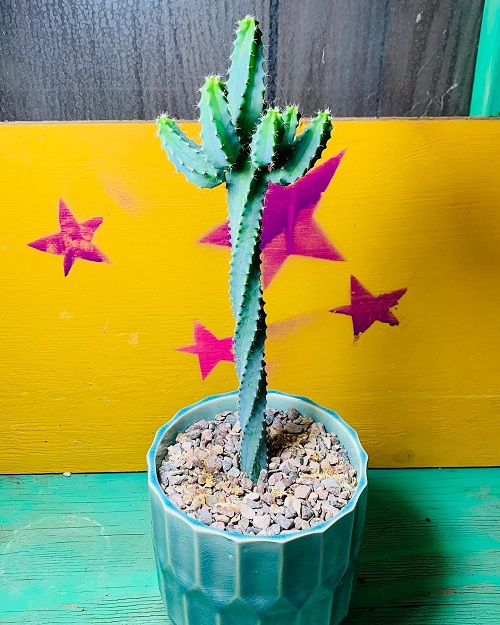
Botanical name: Myrtillocactus geometrizans ‘Spiralis’
Bilberry Cactus is a blue-green cactus from Mexico that grows fast and is often used for grafting. Its sweet edible fruits are a bonus, and it only needs full sun, light watering, and good drainage.
And this cactus has a rich history in tribal medicine and stands as a symbol of adaptability.
9. Mexican Organ Pipe Cactus
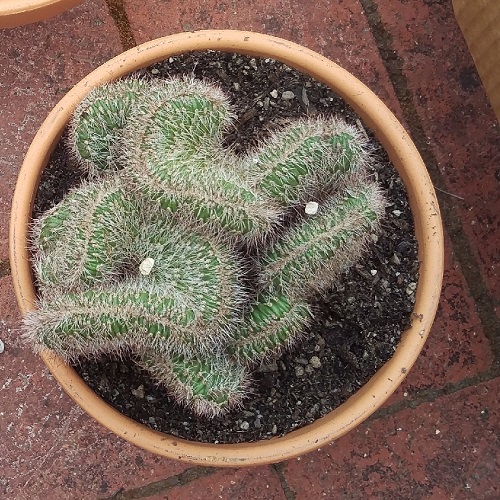
Botanical name: Stenocereus hollianus ‘Spiralis’
Tall, ribbed, and covered in dark spines—this cactus grows in upright clusters. It blooms with white to lavender flowers that open at night and fade by morning.
Its sweet fruit, called “pitaya dulce,” tastes like watermelon!
Which one of these spiral succulents impressed you the most? Let us know in the comments section below.

